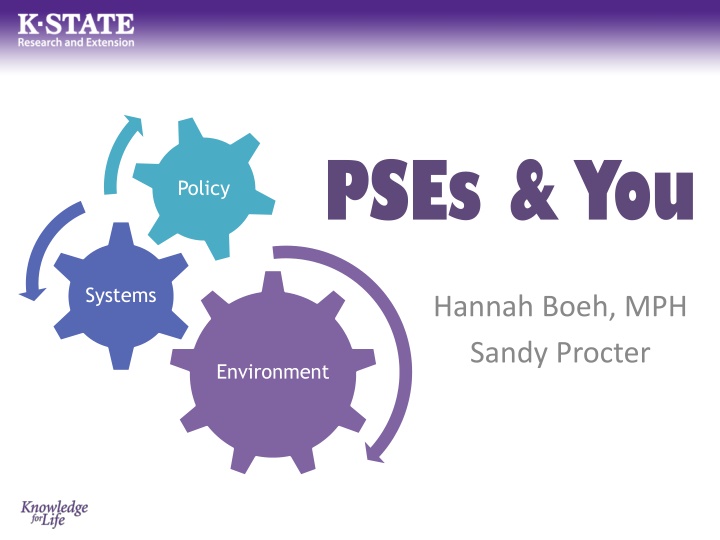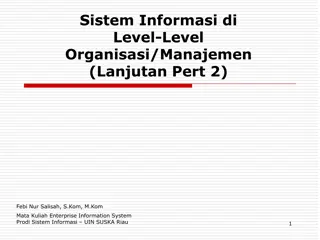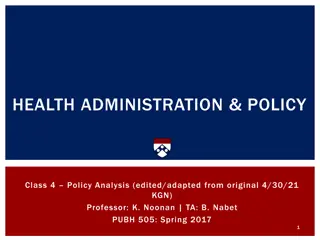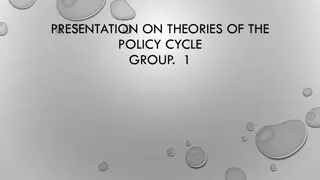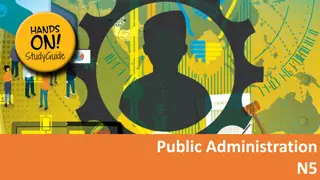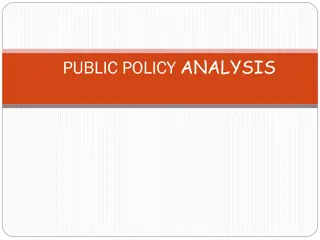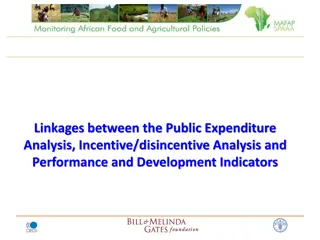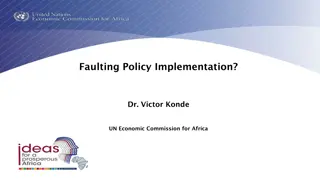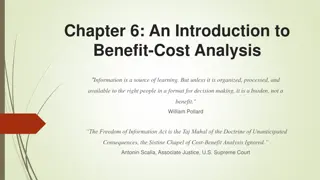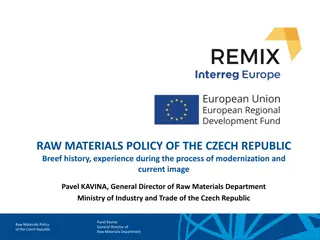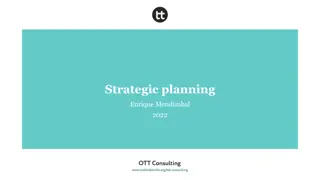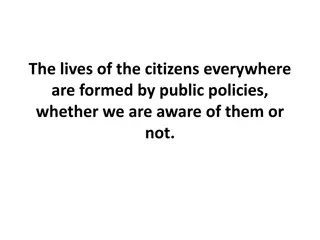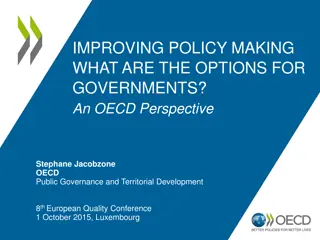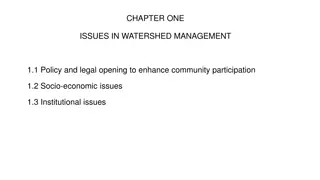Policy Systems and Environment Analysis
"PSEs and Hannah Boeh, MPH Sandy Procter provide an insightful analysis of policy systems and their impact on the environment. Delve into the intersection of policy, systems, and environmental factors with this comprehensive discussion."
Download Presentation

Please find below an Image/Link to download the presentation.
The content on the website is provided AS IS for your information and personal use only. It may not be sold, licensed, or shared on other websites without obtaining consent from the author.If you encounter any issues during the download, it is possible that the publisher has removed the file from their server.
You are allowed to download the files provided on this website for personal or commercial use, subject to the condition that they are used lawfully. All files are the property of their respective owners.
The content on the website is provided AS IS for your information and personal use only. It may not be sold, licensed, or shared on other websites without obtaining consent from the author.
E N D
Presentation Transcript
PSEs & You Policy Systems Hannah Boeh, MPH Sandy Procter Environment
What is policy, systems, and environmental change? A way of modifying the environment to make the healthy choices practical and available to all making the healthy choice the easy choice! Source: What is "Policy, Systems and Environmental Change'? [Pamphlet]. (2015). Oak Park, IL: Communities Putting Prevention to Work.
Policy Change Policies and laws greatly influence the daily decisions we make in our lives, including choices affecting our health. What can be changed? Who can implement changes? Example of change Example: Adding a tax on unhealthy food, passing a law allowing residents to plant community gardens in vacant lots, schools establishing a policy that prohibits junk food in schools fundraising Government Schools Parks Healthcare centers Senior Living Centers Passing of policies, ordinances, resolutions, mandates, regulations, or laws Source: What is "Policy, Systems and Environmental Change'? [Pamphlet]. (2015). Oak Park, IL: Communities Putting Prevention to Work.
Systems Change Changing rules within an organization. System changes work hand-in-hand with policy changes. What can be changed? Who can implement changes? Example of change Example: Creating a community plan to account for health impacts of new projects, creating a certification system for school bake sales to ensure they are in line with wellness policy Government Schools Parks Healthcare centers Senior Living Centers Changing infrastructure within an organization, school, park, worksite or health setting Source: What is "Policy, Systems and Environmental Change'? [Pamphlet]. (2015). Oak Park, IL: Communities Putting Prevention to Work.
Environmental Change Change made to the physical environment. What can be changed? Who can implement changes? Example of change Example: Municipality undertakes a planning process to ensure better pedestrian and bicycle access to main roads and parks Government Schools Parks Healthcare centers Senior Living Centers Installing bike signage on already established bike routes, installing sidewalks, promote walking or biking Source: What is "Policy, Systems and Environmental Change'? [Pamphlet]. (2015). Oak Park, IL: Communities Putting Prevention to Work.
Example: Fresno, CA City was not zoned to allow farmers market. Policy changes amendment codes to allow markets. System changes allowed individuals/organizations to apply to hold farmers markets in city areas. Environment changed with new healthy food options (farmers markets) in community Source: Fry, C., & Chen, L. (n.d.). PSE 101: Building Healthy Communities through Policy, System and Environmental (PSE) Change. Retrieved February 22, 2016, from http://www.changelabsolutions.org/sites/default/files/NEOP_webinar_PSE101_FINAL_20130423.pdf
Example: Healthy Vending Require minimum % of healthy options sold in vending machines on city property Working with existing venders to change product line in vending machines. Healthier food accessible at city meetings, work sites and gatherings Source: Fry, C., & Chen, L. (n.d.). PSE 101: Building Healthy Communities through Policy, System and Environmental (PSE) Change. Retrieved February 22, 2016, from http://www.changelabsolutions.org/sites/default/files/NEOP_webinar_PSE101_FINAL_20130423.pdf
Social Ecological Model Illustrates how all sectors of society combine to shape an individual s food and physical activity choices and ultimately one s calorie balance and chronic disease risk. Source: Supplemental Nutrition Assistance Program (SNAP). (n.d.). Retrieved February 22, 2016, from http://www.fns.usda.gov/snap/nutrition-education
Individual Factors Role Nutrition educators teaching about MyPlate Example Age Sex Race Knowledge/Skills Education to improve individual food and physical activity choices. Factors Source: Supplemental Nutrition Assistance Program (SNAP). (n.d.). Retrieved February 22, 2016, from http://www.fns.usda.gov/snap/nutrition-education
Settings Role Home Childcare Schools Worksites Child care centers offering fresh fruits and vegetables as snacks and structure physical activity Determine what foods are offered and what opportunities for physical activity are provided in each setting. Settings Example Source: Supplemental Nutrition Assistance Program (SNAP). (n.d.). Retrieved February 22, 2016, from http://www.fns.usda.gov/snap/nutrition-education
Sectors Role Organizations Businesses Industry Organization supporting policy or program changes, modifying products, or creating opportunities to be physically active Influence the degree to which people have access to healthy food and/or physical activity opportunities Systems Example Source: Supplemental Nutrition Assistance Program (SNAP). (n.d.). Retrieved February 22, 2016, from http://www.fns.usda.gov/snap/nutrition-education
Social & Cultural Norms Role Rules that govern thoughts, beliefs, and behaviors Food preference, attitudes about body weight; values placed on physical activity and health Shared assumptions of appropriate behavior, based on societal values and reflected in laws and personal expectations. What are norms? Example Source: Supplemental Nutrition Assistance Program (SNAP). (n.d.). Retrieved February 22, 2016, from http://www.fns.usda.gov/snap/nutrition-education
What is our role in implementing PSEs? State EFNEP SNAP- Ed Agents
EFNEP Due to policies of EFNEP, nutrition assistant participation in PSE work will be limited, if at all. Nutrition assistant s primary role continues to be direct education Working with individual factors & settings to create behavior change EFNEP agent will address PSE opportunities in community at sector and setting levels
SNAP-Ed FNS requires two of three evidence-based approaches in every state s SNAP-Ed plan Individual or group-based direct nutrition education, health promotion, and intervention strategies Community and public health approaches to improve nutrition Local roles include mixture of direct education and community approaches These blended approaches should create some PSE opportunities for program assistants and agents
State Program Focus is on collaborative efforts at state, regional and national levels, working with individuals and agencies to maximize PSE opportunities within Kansas.
Strategies for Influencing People 1. Informational -- include education, marketing, and media- based dissemination of information. Goal is to raise awareness or increase knowledge of an issue. 2. Behavioral -- may include dissemination of information, but with explicit, theory-guided focus on promoting specific behavior. Frequently involves developing cognitive and behavioral skills needed to perform, maintain behavior. 3. Social Support -- involve other people (family, friends, peers) as influencers of behaviors in individuals. Supportive people help make desired behavior easier to implement and sustain. Source: Oregon State University Extension. (2015). Strategic Plan for the Extension Family and Community Healthy Program [Pamphlet]. Oregon State University.
Strategies for Influencing Place Ways we can influence setting or context where people live, learn, work, or play 1. Environmental strategies -- efforts to create assets promoting health and well-being. Assets may be material provisions, economic supports, positive social norms, heightened community expectations, and built or natural resources. 2. Systems interventions -- strategies that alter the way a program, organization, institution, or society operates in regard to a particular issue or area of concern. Source: Oregon State University Extension. (2015). Strategic Plan for the Extension Family and Community Healthy Program [Pamphlet]. Oregon State University.
3. Policy interventions -- strategies aimed at creating, implementing or amending laws, ordinances, resolutions, mandates, regulations, or rules 4. Capacity Building helps citizens, organizational leaders, community policy makers and other decision makers lead, implement, and evaluate change efforts. Helps organizations, agencies, and communities improve and develop over time. 5. Collaborative strategies involve more than a single organization. Involves working across various sectors, organizations, and agencies to create measurable, shared, and sustainable impacts. Source: Oregon State University Extension. (2015). Strategic Plan for the Extension Family and Community Healthy Program [Pamphlet]. Oregon State University.
Time to Practice Scenario: You are working with a local community group to help individuals make better health choices. Group members are interested in starting a Farmer s Market; however, a city ordinance doesn t allow the public to use vacant lots for sales. How can you use your knowledge of PSEs and community experience to help this community? (Hint: What is the P, S, E of this scenario?)
Possible Answer Work with the community group to create proposal to use vacant lots for Farmers Markets; present idea to city council to have ordinance amended. System change allows community groups to hold Farmers Markets. Additionally, could create a system to allow individuals to register as sellers in local Farmer s Market. Healthy, fresh, local foods now available to all community members.
Time to PracticeAgain Think about your current role. How can you work to incorporate more PSE involvement or reach more rings of the socio-ecological model?
References What is "Policy, Systems and Environmental Change'? [Pamphlet]. (2015). Oak Park, IL: Communities Putting Prevention to Work. Fry, C., & Chen, L. (n.d.). PSE 101: Building Healthy Communities through Policy, System and Environmental (PSE) Change. Retrieved February 22, 2016, from http://www.changelabsolutions.org/sites/default/files/NEOP_we binar_PSE101_FINAL_20130423.pdf Oregon State University Extension. (2015). Strategic Plan for the Extension Family and Community Healthy Program [Pamphlet]. Oregon State University. Supplemental Nutrition Assistance Program (SNAP). (n.d.). Retrieved February 22, 2016, from http://www.fns.usda.gov/snap/nutrition-education
